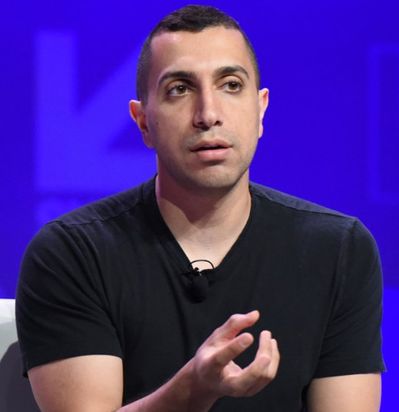Flipboard: An Application that Creates Digitalised Magazine With Curated Contents
Newspapers and magazines have been the biggest source of information. But the time has gone, when people used to sit on their breakfast table and read the entire newspaper, or the time when they would relax in their couch and flip the pages of their favourite magazine. Everything, today, is moving at a faster pace, and people, too, want everything accessible through the swipe of their finger.
But there comes Flipboard for the rescue, which is an application aggregating the news, especially the top stories from social media, photos and videos from different websites and presents it in the form of the magazine to the users. So, you can flip the pages of your virtual magazine through your phone screen and also create one to contribute to this inspiring innovation. The application was developed by Mike McCue and Evan Doll and was released for the first time, exclusively for the iPads, in 2010.
Mike McCue
Mike McCue is an American entrepreneur, who has a great career graph. He has worked with companies like Netscape and Microsoft. In fact, he worked as the Vice President of Technology at Netscape but left the company to co-found his first startup, Tellme Networks, with Angus Davis, in February 1999. In March 2007, the company came under the acquisition of Microsoft, McCue taking the place of General Manager in the company. But in June 2009, he left Microsoft to co-found Flipboard, the world’s first social magazine, with Evan Doll. Along with Tellme Network and Flipboard, he has also founded Paper Software.
Evan Doll
Before founding Flipboard, he worked with Apple as a software engineer. He primarily worked with the iPhone team, Final Cut Pro and Aperture. He has a BS degree in Computer Science from Stanford University where he also taught the first university-level iPhone application development course.

History of Flipboard
At first, the app was launched only for iPad users, and later, was followed by the release of iPhone and iPod versions in December 2011. The app looked extremely lustrous and allured a good number of users from the very beginning. The wide range of publishers, an arsenal of features, innumerable customization options, glossy advertisements, and most importantly, the touch screen enabled swiping feature made it popular in the digital world in no time. It became a source of amusement for every magazine lover. Since the readers were also able to create their own magazines, there were approximately 8 million customized magazines, soon after a year of its launch.
The Android version of the app was released on 5th May 2012. After modifying and releasing updated versions for a couple of years, after its launch finally, a stable version of Flipboard for Android was released on 22nd June 2012. Since then, it has been available on Google Play.
In 2013, the company raised a fund of $161 million, after completing a series C funding round, escalating the value of Flipboard to reported $800 million. Later, the Windows 8 version of the app was demonstrated at the ‘Microsoft 2013 Build Conference’,.
In 2014, four years after the launch of Flipboard in Apple’s App Store, the company witnessed more than 100 million active users with more than 300,000 readers per day. By this time, the company already established a direct partnership with around 8,000 publishers, thus providing brand new stories to the readers every day. In March 2014, Zite’s (a magazine-style reading app from CNN television network) acquisition by Google enhanced the styling of Flipboard’s page, and it also agreed upon publishing global contents of CNN. But, Zite was shut down after a year. In October 2014, Flipboard unveiled the Windows 8 version for Windows phones and other devices.
In 2015, the company received a funding of $200 million from investors, like Kleiner Perkins Caufield & Buyers, Index Ventures, Insight Venture Partners, and Rizvi Traverse Management. In the same year, the company also raised an additional $50 million from JPMorgan Chase. Previously, Flipboard was only available as an app for the smartphone and tablet users, but from February 2015, Flipboard was up in the web, thus enabling users to use it even from the desktops.
New updated versions of the mobile app for both iOS and Android were released in 2017, implementing many new and smart features. In 29th May 2019, Flipboard announced a security breach which allowed the flow of private information of the users to the unauthorized third party. It was taken care of at the earliest, and the company reset all the passwords and authentication tokens.
Future of Flipboard
McCue, in one of the interview, said that this is his last startup, and he will stick to it till the end. This tech-obsessed American native keeps on improving the user interface of the app. He is also looking into building a stronger algorithm for the entire system and better contents for the next generation of the readers.

Annasha Dey is an NIT student, who apart from studying engineering is also a content writer. She has a great interest in photography, writing, reading novels, and travelling as well. She is a foodie who loves socializing and hanging out with her friends. She is also a trained Kathak dancer and a big fashion enthusiast. Dey also loves watching TV series, which includes F.R.I.E.N.D.S. and Big Bang Theory. To be a better writer she prefers to read more











